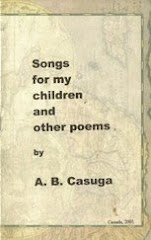13 February 2009
Filipino-ness and other ness-es
Is the novel Ghosts of Manila by James Hamilton-Paterson Filipino even if its author is not Filipino? Does this question even make sense? Avoid it much as we wish, the question still rears its not-so-ugly head: what is Filipino-ness? Since the readers of this blog are not all Filipino, what is Italian-ness? What is Croatian-ness? If the Chinese are still grappling with Chinese-ness and Americans are still grappling with American-ness, what about everyone neither Chinese nor American? We toss about the term "global citizen" but does that really mean anything in the literary sense? It means something in real life, because we need passports to travel. Do we need linguistic or literary passports to travel through world literature?
Posted by Isagani R. Cruz at 5:52 AM
Albert B. Casuga said...
If we must define "Filipino-ness" in the arts, we need to examine the themes and their underpinings. The themes invariably must derive their "meaning" from the Filipino's milieu -- his culture, his myths, his ethos -- the entire gamut of attitudes toward his text and context. Necessarily, these include the layers upon layers of cultural fibre the Filipino has gone through, not to mention the native nuance (or "take") of a fictional or poetic material.
How does Filipino-ness deal, say, with "expressions of love" on Valentine's day? In some Ilocano songs I grew up with, the expression could take the form of a handkerchief dropped by the inamorata and retrieved by the anxious swain while they sing: "Daytoy panyo'k no mareg-reg ko, makapidut isublinanto. Maimarka ti sinan puso ken naiborda iti nagan ko." (When I drop and lose my handkerchief -- whoever picks it up must return it one day. It would have been marked by the image of a heart and embroidered with my name!")
Now is this "treatment of context" in terms of the zarzuela lyrics considered "Filipino"? Is this the "Filipino-ness" we are looking for? But even that bespeaks of the "fandango" introduced by Hispanic literature, and forthwith caricatured by wartime comics Chichay and Tolindoy in the Japanese-time burlesque of the act of swearing love to one's "querida", by dropping that handkerchief and used by the pursuing lad to wipe off bird-droppings he sat on while playing "wall-flower" on the dance kiosk.
Why "Filipino-ness" (as in "bailes de ayer" --- dances of yesteryears -- often performed by expatriate dance troupes elsewhere in global diasporas)? Is that the "distinction" of poetry or fiction written by the Filipino?
What is the Great Filipino novel like? What is the text of that context? (I am sure Dr. Bien Lumbera and Dr. Isagani R. Cruz have better insights about a great Filipino Heritage.)--ALBERT B. CASUGA
13 February, 2009 08:40
Trump says Senate should scrap the filibuster to end the government shutdown
-
President Donald Trump is calling on the Senate to scrap the filibuster, so
that the Republican majority can bypass Democrats and reopen the federal
govern...
1 hour ago











No comments:
Post a Comment